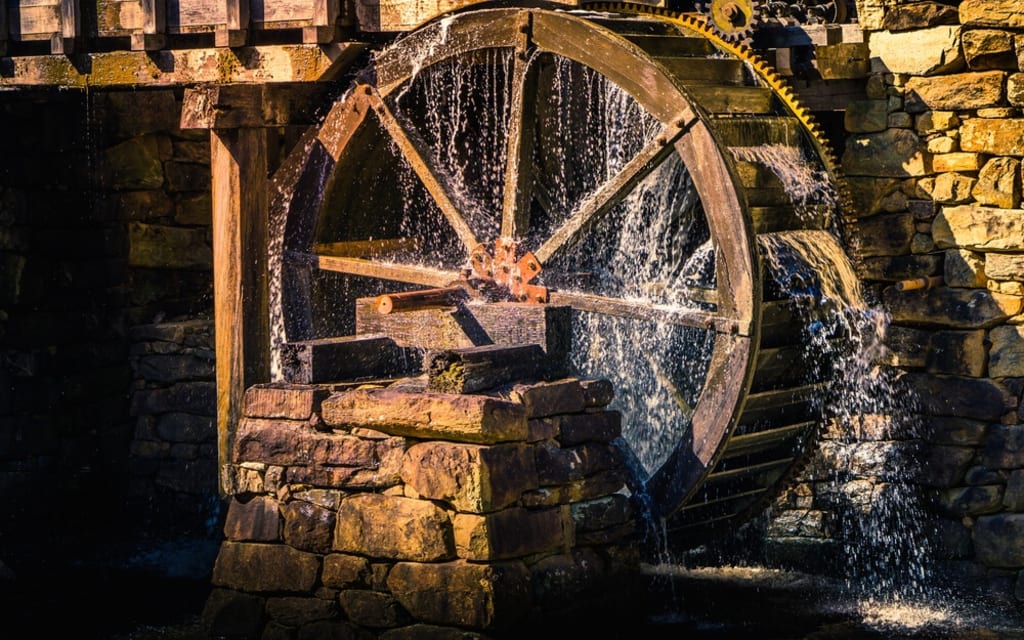Greek Water Mills: Harnessing Nature's Power for Ancient Industry
History

Greek water mills were pioneering devices that revolutionized ancient industry by harnessing the natural power of water for various mechanical tasks. These early machines played a crucial role in grinding grain, processing textiles, and performing other essential tasks that supported Greek society. This article explores the origins, mechanics, technological advancements, cultural impact, and enduring legacy of Greek water mills.
Origins and Historical Context
Water mills emerged in ancient Greece during the Hellenistic period (circa 4th to 1st centuries BCE) and were further developed during the Roman era. The Greeks inherited and refined the technology from earlier civilizations, such as the Egyptians and Persians, adapting it to their own needs and environment.
Located throughout the Greek world, water mills were strategically situated along rivers and streams to utilize flowing water as a renewable energy source. They represented a significant technological advancement, allowing for more efficient and continuous production compared to traditional hand-powered methods.
Mechanics and Technological Advancements
Greek water mills operated on basic but effective principles of mechanical engineering:
- Waterwheel Design: The primary component of a water mill was the waterwheel, which was typically of the undershot or overshot type. In undershot waterwheels, water flowed beneath the wheel, causing it to turn through direct contact with the flowing stream. Overshot waterwheels, on the other hand, utilized water channeled from above, gaining momentum and rotational power as it fell onto the wheel.
-Transmission of Power: The rotational energy of the waterwheel was transferred to a vertical shaft, which then powered millstones or other machinery through a system of gears and shafts. This allowed for the grinding of grains into flour, crushing of ores, and processing of textiles.
- Technological Adaptations: Over time, Greek engineers improved water mill designs by experimenting with different materials for gears and axles, optimizing water flow efficiency, and constructing more durable mills capable of handling larger workloads.
Cultural Impact and Economic Significance
Greek water mills had profound cultural and economic implications:
- Economic Expansion: The introduction of water mills facilitated the expansion of agricultural output and industrial production. Grain could be ground into flour more efficiently, supporting larger populations and urban centers.
- Industrial Innovation: Water mills spurred innovation in various industries, such as milling, mining, and manufacturing. They enabled Greek craftsmen to produce higher quality goods and commodities for trade within the Mediterranean and beyond.
- Social Transformation: The availability of milled flour made bread more accessible to the Greek populace, contributing to dietary diversity and social stability.
Legacy and Enduring Influence
The legacy of Greek water mills extends beyond the ancient world:
- Technological Legacy: Greek water mills laid the foundation for subsequent developments in mechanical engineering and industrial automation. Their efficient use of water power inspired later inventions, such as medieval European watermills and modern hydropower technologies.
- Cultural Heritage: Although few physical remnants of ancient Greek water mills remain today, their historical significance is preserved through archaeological findings, ancient texts, and artistic depictions. Sites like the Barbegal aqueduct and mill complex in Roman Gaul provide insights into ancient water mill technology.
- Environmental Impact: The sustainable use of water power by Greek water mills serves as a historical example of harnessing renewable energy sources. Today, their legacy resonates in discussions on sustainable development and environmental stewardship.
Conclusion
Greek water mills exemplify the ingenuity and practicality of ancient Greek engineering. By harnessing the power of flowing water, these mills transformed agriculture, industry, and society, contributing to economic prosperity and cultural advancement. Their technological innovations laid the groundwork for subsequent developments in mechanical engineering and industrialization, leaving an enduring legacy that continues to inspire advancements in renewable energy and sustainable technology. As symbols of ancient innovation and efficiency, Greek water mills stand as testaments to the enduring human quest for technological progress and environmental harmony.
About the Creator
Marveline Merab
“History never repeats itself. Man always does.”
― Voltaire
Enjoyed the story? Support the Creator.
Subscribe for free to receive all their stories in your feed. You could also pledge your support or give them a one-off tip, letting them know you appreciate their work.






Comments
There are no comments for this story
Be the first to respond and start the conversation.